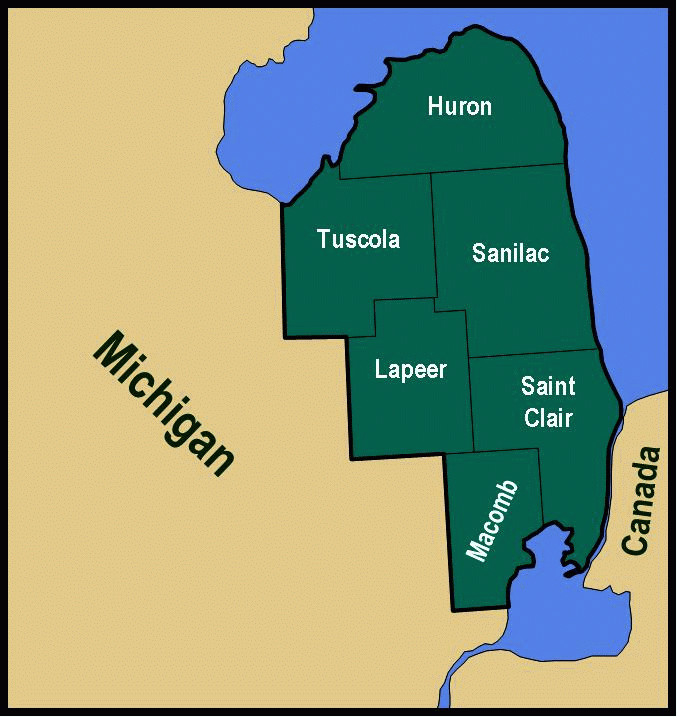
![]()
The Thumb Land Conservancy owns three preserves in St. Clair County:
- Dead End Woods Sanctuary - 17.6 acres in Fort Gratiot Township
- Gerrits Sanctuary - 38.5 acres in Ira Township
- Peltier Beach Ridge Sanctuary - 11.5 Acres in Fort Gratiot Township
![]()

On June 28, 2010, the TLC received its third nature preserve, the 11.5-acre Peltier Beach Ridge
Sanctuary in Fort Gratiot Township, Saint Clair County. The parcel was given to the TLC by Ray and
Nancy Peltier to satisfy State of Michigan requirements, then briefly administered through the
Michigan Department of Natural Resources and Environment, for the long-term protection of 6.3 acres
of wetland on the property, preserved as mitigation for 0.63 acre of wetland to be impacted by an
expansion of the Hamzavi Dermatology office in Fort Gratiot. The Peltierís worked out a deal with Dr.
Syed Hamzavi to preserve the wetland and adjoining upland on their property as mitigation for the
Hamzavi Dermatology project. As with our first preserve, the Dead End Woods Sanctuary in Fort
Gratiot, the Peltier Beach Ridge Sanctuary is protected by a State of Michigan conservation
easement. In accepting ownership of the mitigation property, the TLC agreed to be responsible for
submittal of an approved management plan, annual monitoring of the conservation easement, longterm
stewardship, and submittal of annual monitoring reports to the MDNRE, now the Michigan
Department of Environmental Quality again.
The Peltier Beach Ridge Sanctuary is located a few hundred feet south of the end of West Montevista
Drive, south of Metcalf Road, and along the east side of the Detroit Water Board property. The intake
pipes from Lake Huron for the Detroit Water facility are very near the north property line. Also just
north is the Galbraith Plant Preserve owned by the Michigan Nature Association, and four small lots
north of the MNA preserve, owned by the Saint Clair County Drain Commissioner to be preserved as
wetland mitigation for a future project. Although some people use the Detroit Water line property to
enter the sanctuary from East Montevista Drive, the actual entrance is from North Shoreview Drive,
just east of the intersection with San Juan Drive.
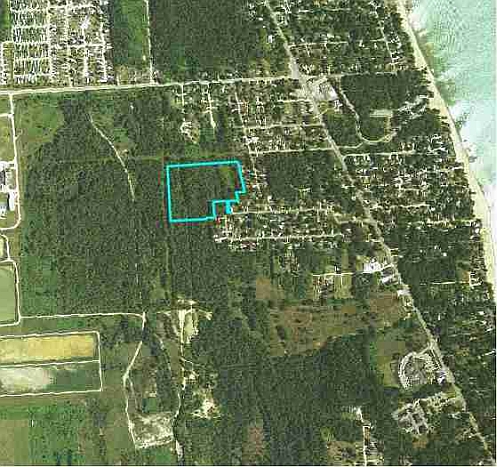
The Peltier Beach Ridge Sanctuary is a small part of a much larger and ecologically unique beach ridge and swale landscape formed thousands of years ago along portions of the early Great Lakes shoreline as water levels dropped, rose again, and then dropped to modern levels after the last glacial period. The beach ridge and swale landscape in this part of the Thumb is a long, narrow formation within about 1 mile of the Lake Huron shoreline, extending from Port Huron into Sanilac County. The landscape began forming about 11,500 years ago, as the last stages of the Wisconsinan glacier melted back, and early Lake Huron was about 30 feet higher than today. About 1,500 years later, the melting glacier uncovered a new outlet from the Georgian Bay and the water dropped over 400 feet. The massive weight of glacial ice depressed the earthís crust for thousands of years, but as it melted, the crust slowly rose and continues today. By 4,500 years ago, the drainage outlet from Georgian Bay raised such that early Lake Huron filled to the Lake Nipissing stage and back to the old shoreline of 7,000 years previous. Great Lakes drainage was gradually limited to the Mississippi River through the old Chicago outlet, and then to the Saint Clair River which rapidly down-cut and lowered the Great Lakes to modern levels, leaving a series of beach ridges as the water dropped.
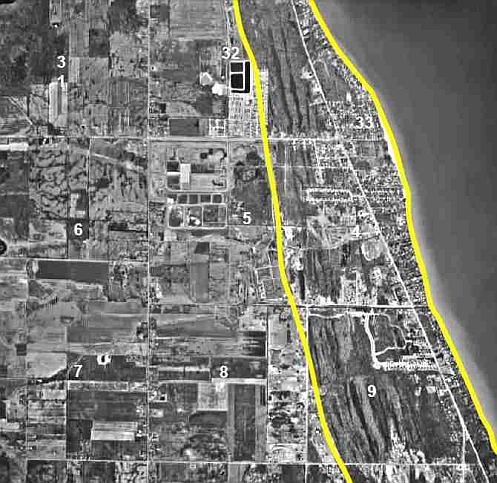
In the southern Thumb, the beach ridge and swale landscape is restricted to a narrow strip along Lake
Huron in Saint Clair County, in Fort Gratiot and Burtchville Townships, and some small patchy
occurrences in Sanilac County. The landscape is much more extensive in Huron and Tuscola
Counties along the Saginaw Bay, especially near Port Crescent State Park. In Saint Clair County, it
originally covered less than 1% of the total land area, and has since been significantly reduced by
commercial and residential development. The landscape consists of a series of upland sand ridges
and mucky wetland troughs or swales between. In Saint Clair County, the sand ridges average about
40 to 50 feet wide and 3 to 4 feet above the adjoining swales. The swales are usually about as wide
as the ridges, but some are a few hundred feet wide. The largest and oldest beach ridge runs
continuously along the western limit of the landscape, furthest inland from Lake Huron. This ridge was
over 500 feet wide across most of its extent and may have been over 30 feet high in some areas.
Although much of it has been mined out, this big sand ridge is still largely intact through Lakeside
Cemetery and into Port Huron near the Blue Water Bridges where it is about 15 feet higher than
adjoining land. Centuries ago, this ridge served as a burial ground for Native American inhabitants
whose burial mounds have been found near Port Huron. The beach ridge and swale landscape
provides not only unique habitat, but also a record of Michiganís post-glacial past.
Most of the Peltier Beach Ridge Sanctuary is forested, except a large trail that runs through the
western part of the site, and portions of the sand ridges in the east of the preserve. Like most of the
landscape, the wetland swales are covered by Silver Maple, Green Ash and Black Ash, the larger ash
trees now all dead due to the Emerald Ash Borer, Eastern Cottonwood, and American Elm. The
upland beach ridges are covered largely by Black Cherry, Bigtooth Aspen, and American Basswood,
with scattered Black Oak and a few Northern White-cedar. The lower ridge bases are lined with Paper
Birch and covered by an unusual concentration of Alternate-leaved Dogwood.
Much of the beach ridge and swale landscape in Saint Clair County was impacted years ago by
logging, clearing, draining, livestock grazing, and sand mining. Because the surrounding forest as a
whole has either been degraded or eliminated, subsequent forest species recruitment has been
severely diminished, which has limited the return of many forest plants and therefore, the recovery of
a mature forest community. The dominance of invasive species like Tartarian Honeysuckle, Common
Privet, and Garlic Mustard has further displaced mature forest species.
Despite so many impacts, the landscape still contains high quality habitat with several unique species.
Like other parts of the landscape in Saint Clair County, a few sand ridges on the Peltier Beach Ridge
Sanctuary contain small patches of Purple-flowering Raspberry, the Lower Peninsulaís equivalent of
the Upper Peninsulaís Thimbleberry, with large flowers and large raspberry fruits that can actually fit
over a finger like a thimble. Purple-flowering Raspberry is thought to be native to only 7 shoreline
counties in Michigan. The species is so restricted to this habitat in Saint Clair County that itís symbolic
of it.
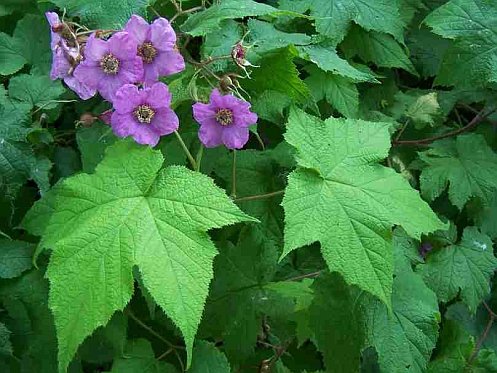
Yellow Ladyís-slipper orchid grows in a variety of habitats, but in Saint Clair County is largely restricted to the moist ridge bases and mucky swales of this landscape. Several Yellow Ladyís-slipper orchids have been found on the Peltier Beach Ridge Sanctuary.
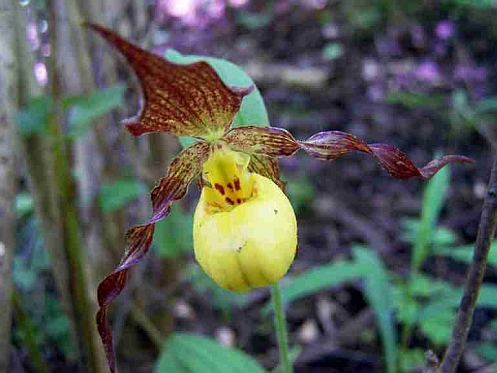
The Eastern Hog-nosed Snake is a special reptilian inhabitant that has been found just a few hundred feet south of the Peltier Beach Ridge Sanctuary. They prefer the more open sand of dunes and disturbed ground such as along the south end of the sanctuary. When aggravated, the snakes flatten their necks like a cobra, and then sometimes rolling over and play dead with their mouths hanging open. They can look imposing, but are harmless. The Eastern Hog-nosed Snake is more common in the southern plains and southeastern US, but is considered to be at some risk of extirpation in the Great Lakes region, Ontario, and New England.
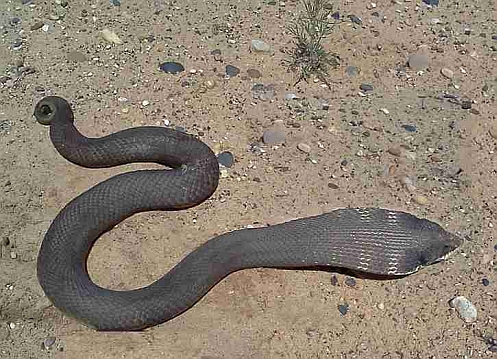
One of the most critical functions of this coastal forest habitat is the support it provides to an abundance of migratory birds as they move north and south along the Lake Huron shoreline. The spring and summer breeding bird population is very abundant and diverse in this area, especially the forest warblers. Several species of warblers have been identified on the Peltier Beach Ridge Sanctuary.
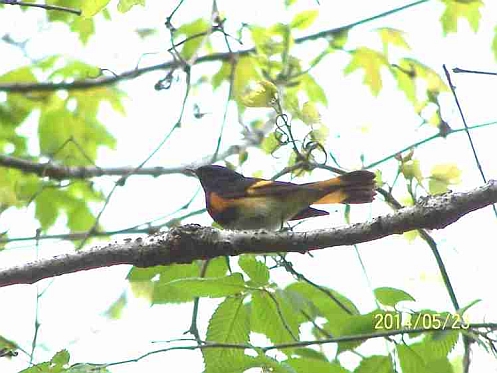
The Peltier Beach Ridge Sanctuary is a high quality wetland and upland complex with a unique geologic history, unique plant and animal community, significant Great Lakes coastal habitat, good restoration potential, and a great addition to the TLC preserve lands. The beach ridge and swale landscape is a high priority for the TLC and we continue working to promote preservation of this area.